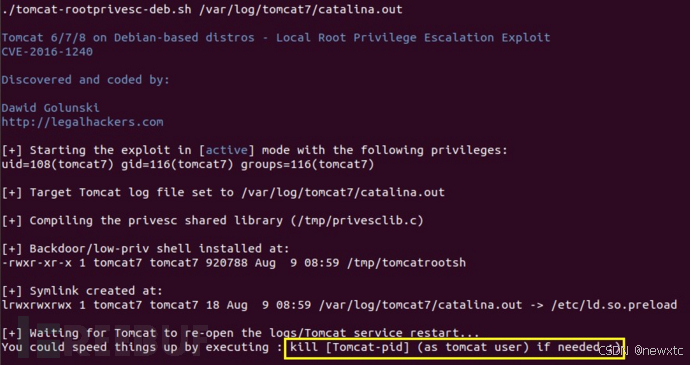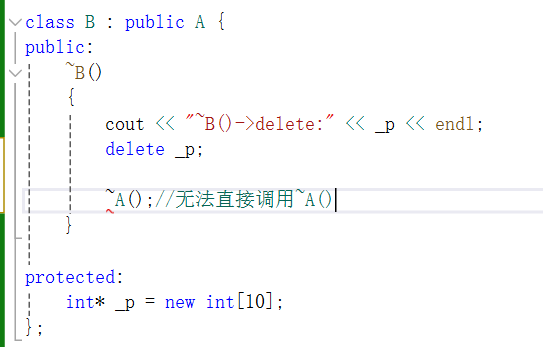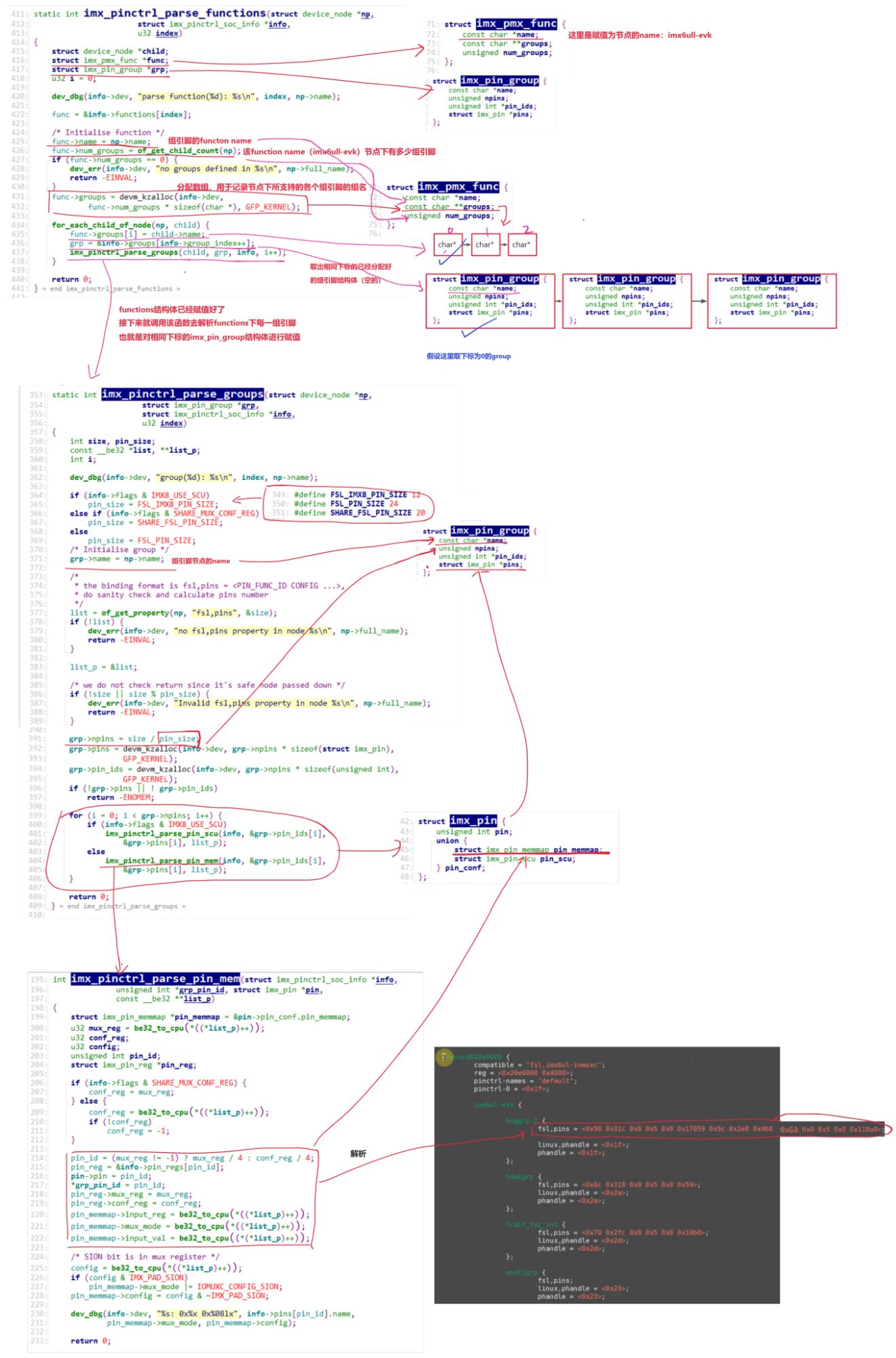目录
1.简单模式队列
2.WorkQueue(⼯作队列)
3 Publish/Subscribe(发布/订阅)
4 Routing(路由模式)
5.Topics(通配符模式)
6 RPC(RPC通信)
7 Publisher Confirms(发布确认)
RabbitMQ 共提供了7种⼯作模式供我们进⾏消息传递,接下来一一介绍它的实现与目的

1.简单模式队列

P为生产者 发送信息中间(消息队列)C作为消费者 直接消费消息队列里面的内容
特点:⼀个⽣产者P,⼀个消费者C,消息只能被消费⼀次.也称为点对点(Point-to-Point)模式.
生产者:
1.创建连接工厂
2.设置工厂参数
3.创建channel
4.声明queue
5 通过channel发送到queue
6. 资源释放
public static void main(String[] args) throws IOException,TimeoutException {
//1.创建连接工厂
ConnectionFactory factory = new ConnectionFactory();
//2.设置工厂参数
factory.setHost(Constants.HOST);
factory.setPort(Constants.PORT);
factory.setUsername(Constants.USER_NAME);
factory.setPassword(Constants.PASSWORD);
factory.setVirtualHost(Constants.VIRTUAL_HOST);
Connection connection = factory.newConnection();
//3.创建channel
Channel channel = connection.createChannel();
//4.声明queue
/**
* queueDeclare(String queue, boolean durable, boolean exclusive, boolean autoDelete,
* Map<String, Object> arguments)
* 1.队列名称
* 2.durable 可持久化 true为持久化
* 3.exclusive 是否独占 false
* 4. autoDelete 是否自动删除 false
* arguments 参数
*/
//如果没有⼀个hello 这样的⼀个队列, 会⾃动创建, 如果有, 则不创建
channel.queueDeclare("simple",true,false,false,null);
//5 通过channel发送到queue
/**
* basicPublish(String exchange, String routingKey, AMQP.BasicProperties props,
* byte[] body)
* 1.exchange 交换机名称 ,简单情况下 一般默认的情况为""
* 2.routingKey 路由名称=队列名称
* 3.props 配置信息
* 4.body 发现信息的数据
*/
for (int i = 0; i < 10; i++) {
String msg = "hello 简单队列~"+i;
channel.basicPublish("","simple", null, msg.getBytes());
}
System.out.println("信息发送成功!");
//6. 资源释放
channel.close();
connection.close();
}

消费者:
1.创建连接工厂
2.设置工厂参数
3.创建channel
4.声明queue
5.消费数据
6.资源释放
public static void main(String[] args) throws IOException, TimeoutException {
//创建连接工厂
ConnectionFactory factory = new ConnectionFactory();
//2.设置工厂参数
factory.setHost(Constants.HOST);
factory.setPort(Constants.PORT);
factory.setUsername(Constants.USER_NAME);
factory.setPassword(Constants.PASSWORD);
factory.setVirtualHost(Constants.VIRTUAL_HOST);
Connection connection = factory.newConnection();
//3.创建channel
Channel channel = connection.createChannel();
//4.声明queue
/**
* queueDeclare(String queue, boolean durable, boolean exclusive, boolean autoDelete,
* Map<String, Object> arguments)
* 1.队列名称
* 2.durable 可持久化 true为持久化
* 3.exclusive 是否独占 false
* 4. autoDelete 是否自动删除 false
* arguments 参数
*/
//如果没有⼀个hello 这样的⼀个队列, 会⾃动创建, 如果有, 则不创建
channel.queueDeclare("simple",true,false,false,null);
//5.接收信息 并消费
/**
* basicConsume(String queue, boolean autoAck, Consumer callback)
* queue :队列名称
* autoAck:是否自动确认 消费者接收信息与MQ
* callback :回调对象
*/
DefaultConsumer consumer = new DefaultConsumer(channel) {
/*
回调方法 当收到信息 自动执行该方法
consumerTag
*/
@Override
public void handleDelivery(String consumerTag, Envelope envelope, AMQP.BasicProperties properties, byte[] body) throws IOException {
System.out.println("接收到信息:"+new String(body));
}
};
channel.basicConsume("simple",true,consumer);
// 释放资源
channel.close();
connection.close();
}

2.WorkQueue(⼯作队列)

一个生产者(P) 多个消费者(C) 消息队列会平均分配给消费者
特点:消息不会重复,分配给不同的消费者.
适⽤场景:集群环境中做异步处理
生产者:
跟简单模式类似 或一个队列名称
public static void main(String[] args) throws IOException,TimeoutException {
//1.创建连接工厂
ConnectionFactory factory = new ConnectionFactory();
//2.设置工厂参数
factory.setHost(Constants.HOST);
factory.setPort(Constants.PORT);
factory.setUsername(Constants.USER_NAME);
factory.setPassword(Constants.PASSWORD);
factory.setVirtualHost(Constants.VIRTUAL_HOST);
Connection connection = factory.newConnection();
//3.创建channel
Channel channel = connection.createChannel();
//4.声明queue
channel.queueDeclare(Constants.WORK_QUEUE,true,false,false,null);
//5 通过channel发送到queue
for (int i = 0; i < 10; i++) {
String msg = "hello 工作队列~"+i;
channel.basicPublish("",Constants.WORK_QUEUE, null, msg.getBytes());
}
System.out.println("信息发送成功!");
//6. 资源释放
channel.close();
connection.close();
}
消费者1:
public static void main(String[] args) throws IOException, TimeoutException {
//创建连接工厂
ConnectionFactory factory = new ConnectionFactory();
//2.设置工厂参数
factory.setHost(Constants.HOST);
factory.setPort(Constants.PORT);
factory.setUsername(Constants.USER_NAME);
factory.setPassword(Constants.PASSWORD);
factory.setVirtualHost(Constants.VIRTUAL_HOST);
Connection connection = factory.newConnection();
//3.创建channel
Channel channel = connection.createChannel();
//4.声明queue
//如果没有⼀个hello 这样的⼀个队列, 会⾃动创建, 如果有, 则不创建
channel.queueDeclare(Constants.WORK_QUEUE,true,false,false,null);
//5.接收信息 并消费
DefaultConsumer consumer = new DefaultConsumer(channel) {
@Override
public void handleDelivery(String consumerTag, Envelope envelope, AMQP.BasicProperties properties, byte[] body) throws IOException {
System.out.println("接收到信息:"+new String(body));
}
};
channel.basicConsume(Constants.WORK_QUEUE,true,consumer);
// 释放资源
channel.close();
connection.close();
} 消费者2 也是同样的代码
消费者2 也是同样的代码

3 Publish/Subscribe(发布/订阅)

Fanout:⼴播,将消息交给所有绑定到交换机的队列(Publish/Subscribe模式)
X作为交换机 将消息复制多份 并且发送多个消费者 并且每个消费者收到相同的信息
比如 P发送了10条消息 C1和C2得消费10条信息
适合场景: 消息需要被多个消费者同时接收的场景. 如: 实时通知或者⼴播消息

Exchange(交换机)只负责转发消息, 不具备存储消息的能⼒, 因此如果没有任何队列与Exchange绑定,或者没有符合路由规则的队列,那么消息就会丢失
RoutingKey: 路由键.⽣产者将消息发给交换器时, 指定的⼀个字符串, ⽤来告诉交换机应该如何处理这个消息.Binding Key:绑定. RabbitMQ中通过Binding(绑定)将交换器与队列关联起来, 在绑定的时候⼀般会指定⼀个Binding Key, 这样RabbitMQ就知道如何正确地将消息路由到队列了.

生产者:
public static void main(String[] args) throws IOException, TimeoutException {
//1. 建立连接
ConnectionFactory connectionFactory = new ConnectionFactory();
connectionFactory.setHost(Constants.HOST);
connectionFactory.setPort(Constants.PORT); //需要提前开放端口号
connectionFactory.setUsername(Constants.USER_NAME);//账号
connectionFactory.setPassword(Constants.PASSWORD); //密码
connectionFactory.setVirtualHost(Constants.VIRTUAL_HOST); //虚拟主机
Connection connection = connectionFactory.newConnection();
//2. 开启信道
Channel channel = connection.createChannel();
//3. 声明交换机
channel.exchangeDeclare(Constants.FANOUT_EXCHANGE, BuiltinExchangeType.FANOUT, true);
//4. 声明队列
channel.queueDeclare(Constants.FANOUT_QUEUE1,true,false,false,null);
channel.queueDeclare(Constants.FANOUT_QUEUE2,true,false,false,null);
//5. 交换机和队列绑定
channel.queueBind(Constants.FANOUT_QUEUE1,Constants.FANOUT_EXCHANGE,"");
channel.queueBind(Constants.FANOUT_QUEUE2,Constants.FANOUT_EXCHANGE,"");
//6. 发布消息
for (int i = 0; i < 10; i++) {
String msg = "hello 发布订阅队列~"+i;
channel.basicPublish(Constants.FANOUT_EXCHANGE,"", null, msg.getBytes());
}
System.out.println("消息发送成功");
//7. 释放资源
channel.close();
connection.close();
}
消费者1
public static void main(String[] args) throws IOException, TimeoutException {
//1. 建立连接
ConnectionFactory connectionFactory = new ConnectionFactory();
connectionFactory.setHost(Constants.HOST);
connectionFactory.setPort(Constants.PORT); //需要提前开放端口号
connectionFactory.setUsername(Constants.USER_NAME);//账号
connectionFactory.setPassword(Constants.PASSWORD); //密码
connectionFactory.setVirtualHost(Constants.VIRTUAL_HOST); //虚拟主机
Connection connection = connectionFactory.newConnection();
//2. 开启信道
Channel channel = connection.createChannel();
//3. 声明队列
channel.queueDeclare(Constants.FANOUT_QUEUE1,true,false,false,null);
//4. 消费消息
DefaultConsumer consumer = new DefaultConsumer(channel){
//从队列中收到消息, 就会执行的方法
@Override
public void handleDelivery(String consumerTag, Envelope envelope, AMQP.BasicProperties properties, byte[] body) throws IOException {
System.out.println("接收到消息:"+ new String(body));
}
};
channel.basicConsume(Constants.FANOUT_QUEUE1, true, consumer);
}
消费者2同理

4 Routing(路由模式)

路由模式是发布订阅模式的变种, 在发布订阅基础上, 增加路由key
发布订阅模式是⽆条件的将所有消息分发给所有消费者, 路由模式是Exchange根据RoutingKey的规则, 将数据筛选后发给对应的消费者队列
适合场景: 需要根据特定规则分发消息的场景.⽐如系统打印⽇志, ⽇志等级分为error, warning, info,debug, 就可以通过这种模式,把不同的⽇志发送到不同的队列, 最终输出到不同的⽂件
生产者:
public static void main(String[] args) throws IOException, TimeoutException {
//1. 建立连接
ConnectionFactory connectionFactory = new ConnectionFactory();
connectionFactory.setHost(Constants.HOST);
connectionFactory.setPort(Constants.PORT); //需要提前开放端口号
connectionFactory.setUsername(Constants.USER_NAME);//账号
connectionFactory.setPassword(Constants.PASSWORD); //密码
connectionFactory.setVirtualHost(Constants.VIRTUAL_HOST); //虚拟主机
Connection connection = connectionFactory.newConnection();
//2. 开启信道
Channel channel = connection.createChannel();
//3. 声明交换机
channel.exchangeDeclare(Constants.DIRECT_EXCHANGE, BuiltinExchangeType.DIRECT, true);
//4. 声明队列
channel.queueDeclare(Constants.DIRECT_QUEUE1,true,false,false,null);
channel.queueDeclare(Constants.DIRECT_QUEUE2,true,false,false,null);
//5. 交换机和队列绑定
channel.queueBind(Constants.DIRECT_QUEUE1,Constants.DIRECT_EXCHANGE,"a");
channel.queueBind(Constants.DIRECT_QUEUE2,Constants.DIRECT_EXCHANGE,"a");
channel.queueBind(Constants.DIRECT_QUEUE2,Constants.DIRECT_EXCHANGE,"b");
channel.queueBind(Constants.DIRECT_QUEUE2,Constants.DIRECT_EXCHANGE,"c");
//6. 发布消息
String msg_a = "hello 路由队列~ my routingKey is a...";
channel.basicPublish(Constants.DIRECT_EXCHANGE,"a", null, msg_a.getBytes());
String msg_b = "hello 路由队列~ my routingKey is b...";
channel.basicPublish(Constants.DIRECT_EXCHANGE,"b", null, msg_b.getBytes());
String msg_c = "hello 路由队列~ my routingKey is c...";
channel.basicPublish(Constants.DIRECT_EXCHANGE,"c", null, msg_c.getBytes());
System.out.println("消息发送成功");
//7. 释放资源
channel.close();
connection.close();
}消费者1
public class Consumer2 {
public static void main(String[] args) throws IOException, TimeoutException {
//创建连接工厂
ConnectionFactory factory = new ConnectionFactory();
//2.设置工厂参数
factory.setHost(Constants.HOST);
factory.setPort(Constants.PORT);
factory.setUsername(Constants.USER_NAME);
factory.setPassword(Constants.PASSWORD);
factory.setVirtualHost(Constants.VIRTUAL_HOST);
Connection connection = factory.newConnection();
//3.创建channel
Channel channel = connection.createChannel();
//4.声明queue
//如果没有⼀个hello 这样的⼀个队列, 会⾃动创建, 如果有, 则不创建
channel.queueDeclare(Constants.DIRECT_QUEUE1,true,false,false,null);
//5.接收信息 并消费
DefaultConsumer consumer = new DefaultConsumer(channel) {
@Override
public void handleDelivery(String consumerTag, Envelope envelope, AMQP.BasicProperties properties, byte[] body) throws IOException {
System.out.println("接收到信息:"+new String(body));
}
};
channel.basicConsume(Constants.DIRECT_QUEUE1,true,consumer);
}
消费者 2同理

5.Topics(通配符模式)

路由模式的升级版, 在routingKey的基础上,增加了通配符的功能, 使之更加灵活.
Topics和Routing的基本原理相同,即:⽣产者将消息发给交换机,交换机根据RoutingKey将消息转发给与RoutingKey匹配的队列. 类似于正则表达式的⽅式来定义Routingkey的模式.
适合场景: 需要灵活匹配和过滤消息的场景
生产者:
public static void main(String[] args) throws IOException, TimeoutException {
//1. 建立连接
ConnectionFactory connectionFactory = new ConnectionFactory();
connectionFactory.setHost(Constants.HOST);
connectionFactory.setPort(Constants.PORT); //需要提前开放端口号
connectionFactory.setUsername(Constants.USER_NAME);//账号
connectionFactory.setPassword(Constants.PASSWORD); //密码
connectionFactory.setVirtualHost(Constants.VIRTUAL_HOST); //虚拟主机
Connection connection = connectionFactory.newConnection();
//2. 开启信道
Channel channel = connection.createChannel();
//3. 声明交换机
channel.exchangeDeclare(Constants.TOPIC_EXCHANGE, BuiltinExchangeType.TOPIC, true);
//4. 声明队列
channel.queueDeclare(Constants.TOPIC_QUEUE1,true,false,false,null);
channel.queueDeclare(Constants.TOPIC_QUEUE2,true,false,false,null);
//5. 交换机和队列绑定
channel.queueBind(Constants.TOPIC_QUEUE1,Constants.TOPIC_EXCHANGE,"*.a.*");
channel.queueBind(Constants.TOPIC_QUEUE2,Constants.TOPIC_EXCHANGE,"*.*.b");
channel.queueBind(Constants.TOPIC_QUEUE2,Constants.TOPIC_EXCHANGE,"c.#");
//6. 发布消息
String msg_a = "hello 路由队列~ my routingKey is ae.a.f...";
channel.basicPublish(Constants.TOPIC_EXCHANGE,"ae.a.f", null, msg_a.getBytes());
String msg_b = "hello 路由队列~ my routingKey is ef.a.b...";
channel.basicPublish(Constants.TOPIC_EXCHANGE,"ef.a.b", null, msg_b.getBytes());
String msg_c = "hello 路由队列~ my routingKey is c.ef.d ...";
channel.basicPublish(Constants.TOPIC_EXCHANGE,"c.ef.d", null, msg_c.getBytes());
System.out.println("消息发送成功");
//7. 释放资源
channel.close();
connection.close();
}
消费者1: 只接收*.a.*

消费者2: 接收*.*.b c.#

6 RPC(RPC通信)

在RPC通信的过程中, 没有⽣产者和消费者, ⽐较像咱们RPC远程调⽤, ⼤概就是通过两个队列实现了⼀个可回调的过程.

客户端:1.发送请求(携带replyTo,correlationId )2.接收响应(验证correlationId)
服务器:1.接收请求 进行响应 2.发送响应(按客户端指定的replyTo,设置correlationId)
客户端:
public static void main(String[] args) throws IOException, TimeoutException, InterruptedException {
//1. 建立连接
ConnectionFactory connectionFactory = new ConnectionFactory();
connectionFactory.setHost(Constants.HOST);
connectionFactory.setPort(Constants.PORT); //需要提前开放端口号
connectionFactory.setUsername(Constants.USER_NAME);//账号
connectionFactory.setPassword(Constants.PASSWORD); //密码
connectionFactory.setVirtualHost(Constants.VIRTUAL_HOST); //虚拟主机
Connection connection = connectionFactory.newConnection();
//2. 开启信道
Channel channel = connection.createChannel();
channel.queueDeclare(Constants.RPC_RESPONSE_QUEUE,true,false,false,null);
channel.queueDeclare(Constants.RPC_REQUEST_QUEUE,true,false,false,null);
//3. 发送请求
String msg = "hello rpc...";
//设置请求的唯一标识
String correlationID = UUID.randomUUID().toString();
//设置请求的相关属性
AMQP.BasicProperties props = new AMQP.BasicProperties().builder()
.correlationId(correlationID)
.replyTo(Constants.RPC_RESPONSE_QUEUE)
.build();
channel.basicPublish("",Constants.RPC_REQUEST_QUEUE,props,msg.getBytes());
//4. 接收响应
//使用阻塞队列, 来存储响应信息
final BlockingQueue<String> response = new ArrayBlockingQueue<>(1);
DefaultConsumer consumer = new DefaultConsumer(channel){
@Override
public void handleDelivery(String consumerTag, Envelope envelope, AMQP.BasicProperties properties, byte[] body) throws IOException {
String respMsg = new String(body);
System.out.println("接收到回调消息: "+ respMsg);
if (correlationID.equals(properties.getCorrelationId())){
//如果correlationID校验一致
response.offer(respMsg);
}
}
};
channel.basicConsume(Constants.RPC_RESPONSE_QUEUE, true, consumer);
String result = response.take();
System.out.println("[RPC Client 响应结果]:"+ result);
}
客户端:
public static void main(String[] args) throws IOException, TimeoutException, InterruptedException {
//1. 建立连接
ConnectionFactory connectionFactory = new ConnectionFactory();
connectionFactory.setHost(Constants.HOST);
connectionFactory.setPort(Constants.PORT); //需要提前开放端口号
connectionFactory.setUsername(Constants.USER_NAME);//账号
connectionFactory.setPassword(Constants.PASSWORD); //密码
connectionFactory.setVirtualHost(Constants.VIRTUAL_HOST); //虚拟主机
Connection connection = connectionFactory.newConnection();
//2. 开启信道
Channel channel = connection.createChannel();
channel.queueDeclare(Constants.RPC_RESPONSE_QUEUE,true,false,false,null);
channel.queueDeclare(Constants.RPC_REQUEST_QUEUE,true,false,false,null);
//3. 发送请求
String msg = "hello rpc...";
//设置请求的唯一标识
String correlationID = UUID.randomUUID().toString();
//设置请求的相关属性
AMQP.BasicProperties props = new AMQP.BasicProperties().builder()
.correlationId(correlationID)
.replyTo(Constants.RPC_RESPONSE_QUEUE)
.build();
channel.basicPublish("",Constants.RPC_REQUEST_QUEUE,props,msg.getBytes());
//4. 接收响应
//使用阻塞队列, 来存储响应信息
final BlockingQueue<String> response = new ArrayBlockingQueue<>(1);
DefaultConsumer consumer = new DefaultConsumer(channel){
@Override
public void handleDelivery(String consumerTag, Envelope envelope, AMQP.BasicProperties properties, byte[] body) throws IOException {
String respMsg = new String(body);
System.out.println("接收到回调消息: "+ respMsg);
if (correlationID.equals(properties.getCorrelationId())){
//如果correlationID校验一致
response.offer(respMsg);
}
}
};
channel.basicConsume(Constants.RPC_RESPONSE_QUEUE, true, consumer);
String result = response.take();
System.out.println("[RPC Client 响应结果]:"+ result);
}

7 Publisher Confirms(发布确认)
消息丢失其中一种情况 ⽣产者问题. 因为应⽤程序故障, ⽹络抖动等各种原因, ⽣产者没有成功向broker发送消息
可以采⽤发布确认(Publisher Confirms)机制实现
发送⽅确认机制最⼤的好处在于它是异步的, ⽣产者可以同时发布消息和等待信道返回确认消息.
1. 当消息最终得到确认之后, ⽣产者可以通过回调⽅法来处理该确认消息. 2. 如果RabbitMQ因为⾃⾝内部错误导致消息丢失, 就会发送⼀条nack(Basic.Nack)命令, ⽣产者同样 可以在回调⽅法中处理该nack命令.使⽤发送确认机制, 必须要信道设置成confirm(确认)模式.
发布确认有3种策略, 接下来我们来学习这三种策略
(1) Publishing Messages Individually(单独确认)
private static void publishingMessagesIndividually() throws Exception {
try(Connection connection = createConnection()) {
//1.开启信道
Channel channel = connection.createChannel();
//2. 设置信道为confirm模式
channel.confirmSelect();
//3.声明队列
channel.queueDeclare(Constants.PUBLISHER_CONFIRMS_QUEUE1,true,false,false,null);
//4.发送消息,并等待确认
Long start = System.currentTimeMillis();
for (int i = 0; i < MESSAGE_COUNT; i++) {
String msg = "hello publisher confirms"+i;
channel.basicPublish("",Constants.PUBLISHER_CONFIRMS_QUEUE1,null,msg.getBytes());
//等待确认
channel.waitForConfirmsOrDie(5000);
}
Long end = System.currentTimeMillis();
System.out.printf("单独确认策略, 消息条数: %d, 耗时: %d ms \n",MESSAGE_COUNT, end-start);
}
}![]()
(2)Publishing Messages in Batches(批量确认)
private static void publishingMessagesInBatches() throws Exception {
try(Connection connection = createConnection()) {
//1.开启信道
Channel channel = connection.createChannel();
//2. 设置信道为confirm模式
channel.confirmSelect();
//3.声明队列
channel.queueDeclare(Constants.PUBLISHER_CONFIRMS_QUEUE2,true,false,false,null);
//4. 发送消息, 并进行确认
long start = System.currentTimeMillis();
int batchSize = 100;
int outstandingMessageCount = 0;
for (int i = 0; i < MESSAGE_COUNT; i++) {
String msg = "hello publisher confirms"+i;
channel.basicPublish("",Constants.PUBLISHER_CONFIRMS_QUEUE2,null,msg.getBytes());
outstandingMessageCount++;
if(outstandingMessageCount == batchSize) {
channel.waitForConfirmsOrDie(5000);
outstandingMessageCount = 0;
}
}
if(outstandingMessageCount > 0) {
channel.waitForConfirmsOrDie(5000);
}
long end = System.currentTimeMillis();
System.out.printf("批量确认策略, 消息条数: %d, 耗时: %d ms \n",MESSAGE_COUNT, end-start);
}
} (3)Handling Publisher Confirms Asynchronously(异步确认)
(3)Handling Publisher Confirms Asynchronously(异步确认)
private static void handlingPublisherConfirmsAsynchronously() throws Exception {
try(Connection connection = createConnection()) {
//1.开启信道
Channel channel = connection.createChannel();
//2. 设置信道为confirm模式
channel.confirmSelect();
//3.声明队列
channel.queueDeclare(Constants.PUBLISHER_CONFIRMS_QUEUE3,true,false,false,null);
//4. 监听confirm
//集合中存储的是未确认的消息ID
long start = System.currentTimeMillis();
SortedSet<Long> confirmSeqNo = Collections.synchronizedSortedSet(new TreeSet<>());
channel.addConfirmListener(new ConfirmListener() {
@Override
public void handleAck(long deliveryTag, boolean multiple) throws IOException {
if(multiple) {
confirmSeqNo.headSet(deliveryTag+1).clear();
} else {
confirmSeqNo.remove(deliveryTag);
}
}
@Override
public void handleNack(long deliveryTag, boolean multiple) throws IOException {
if(multiple) {
confirmSeqNo.headSet(deliveryTag+1).clear();
}else {
confirmSeqNo.remove(deliveryTag);
}
//业务需要根据实际场景进行处理, 比如重发, 此处代码省略
}
});
for (int i = 0; i < MESSAGE_COUNT; i++) {
String msg = "hello publisher confirms"+i;
long seqNo = channel.getNextPublishSeqNo();
channel.basicPublish("",Constants.PUBLISHER_CONFIRMS_QUEUE3,null,msg.getBytes());
confirmSeqNo.add(seqNo);
}
while (!confirmSeqNo.isEmpty()) {
Thread.sleep(10);
}
long end = System.currentTimeMillis();
System.out.printf("异步确认策略, 消息条数: %d, 耗时: %d ms \n",MESSAGE_COUNT, end-start);
}
}
消息数越多, 异步确认的优势越明显
小结:1-5工作模式重点学习 6-7工作模式了解即可


















